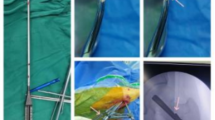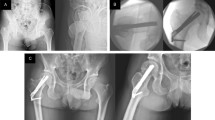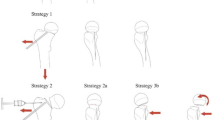Abstract
MANY cases of fractures of the neck of the femur are complicated by death of the femoral head. Similarly, a large number of cases of necrosis of the femoral head follows on traumatic dislocation of the hips. The earlier this important complication can be diagnosed the better can treatment be planned.
This is a preview of subscription content, access via your institution
Access options
Subscribe to this journal
Receive 51 print issues and online access
$199.00 per year
only $3.90 per issue
Buy this article
- Purchase on SpringerLink
- Instant access to full article PDF
Prices may be subject to local taxes which are calculated during checkout
Similar content being viewed by others
References
Tucker, F. R., J. Bone and Joint Surg., 32, B, 100 (1950).
Arden, G. P., and Veall, N., Proc. Roy. Soc. Med., 46, 344 (1953).
Bohr, H. B., Zilversmith, D. B., and Calandmiccio, R. A., J. Bone and Joint Surg., 37, A, 260 (1955).
Kety, S. S., Amer. J. Med. Sci., 215, 352 (1948). Walder, D. N., Brit. Med. J., i, 255 (1958). Smith, B. C., and Quimby, E. H., Radiology, 45, 335 (1945).
Author information
Authors and Affiliations
Rights and permissions
About this article
Cite this article
LAING, P., FERGUSON, A. Sodium-24 as an Indicator of the Blood Supply of Bone. Nature 182, 1442–1443 (1958). https://doi.org/10.1038/1821442a0
Issue date:
DOI: https://doi.org/10.1038/1821442a0



